





Beth Chatto’s gardens in the driest part of the United Kingdom (with just 20 inches of annual rainfall) have become famous not only for their sheer beauty, but also for the mantra on which Chatto’s nursery and entire gardening philosophy is based: right plant, right place. And to prove her point, almost 25 years ago she planted a new gravel garden on what was once the car park of her home, nursery, and gardens in Elmstead, Essex.
David Ward worked on the garden from the start and now runs study days throughout the year to illustrate the principles of drought-resistant gardening, from soil preparation to design details. We spent an enlightening and inspiring day learning how to create a dry garden. (See below for information about the next upcoming study day.)
Here are 11 tips for creating a gravel garden from scratch:
Photography by Clare Coulson.
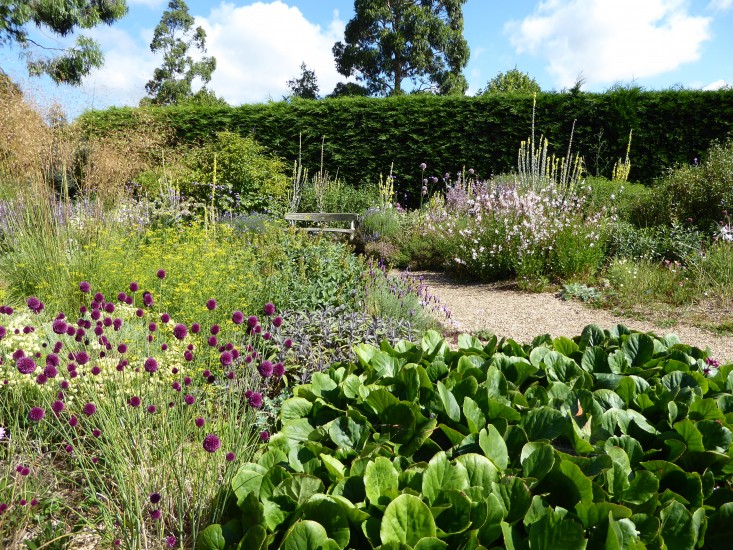
Above: Bergenias, says Ward, are an indispensable part of the plant list, providing lush foliage in summer and, with this variety B. ‘Miss Crawford’ (pictured in the foreground), white flowers appear in late winter when little else is in flower.
The gravel garden was sited on a poor, stony and free draining soil. But that’s not to say that there’s not a good layer of topsoil now; when planting new areas the ground is double dug to a depth of two spits and this is especially important on compacted soil. Then organic matter is dug in and, at Beth Chatto, they have found spent mushroom compost better than anything else. The ground is then raked over so there are no lumps and bumps.
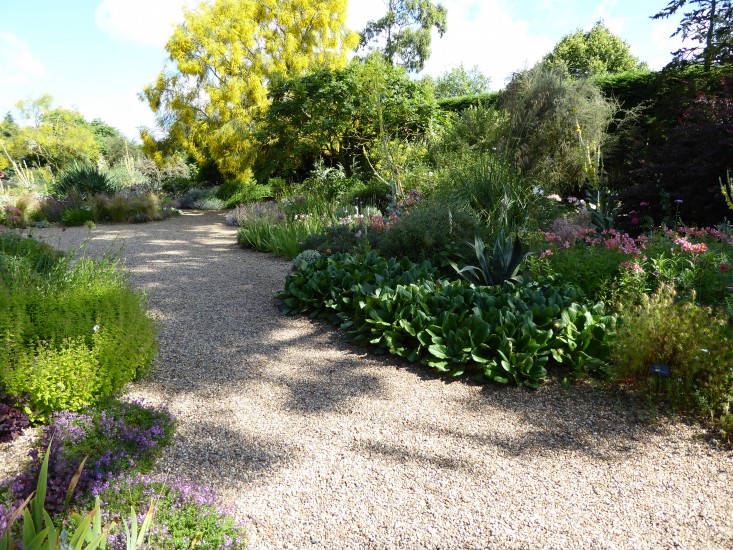
Above: The beds are all designed with serpentine curves and the best way to mark them out is with an obliging garden hose to create smooth lines.
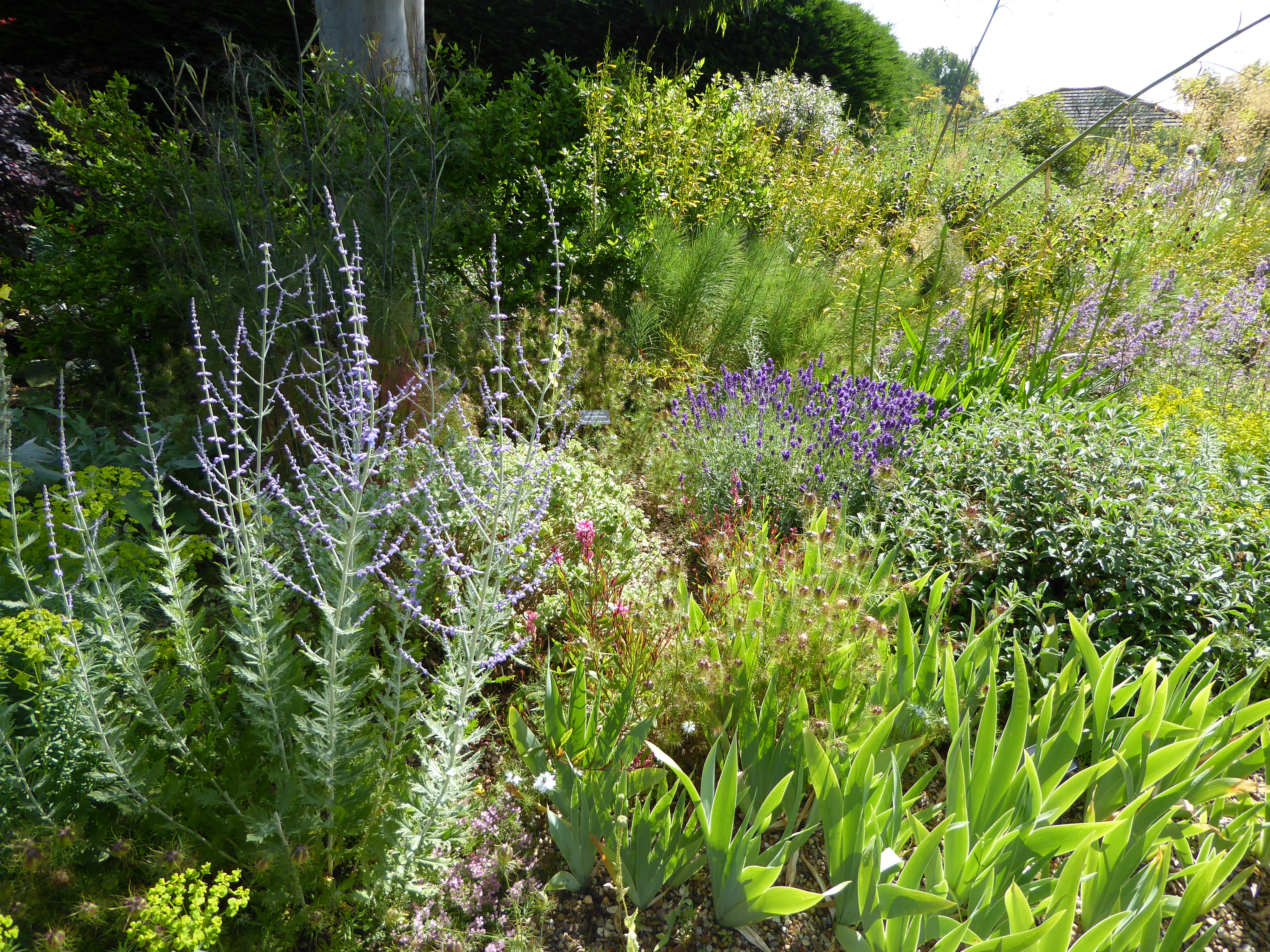
Above: The gravel garden is never watered or fed, so soil preparation and planting is key. When an area is ready for planting, submerge pots in a bucket of water for five minutes. After planting, create a slight bowl around the plant and water it in really well. Use a few inches of gravel as a mulch, which not only looks beautiful but will help suppress weeds and trap moisture.
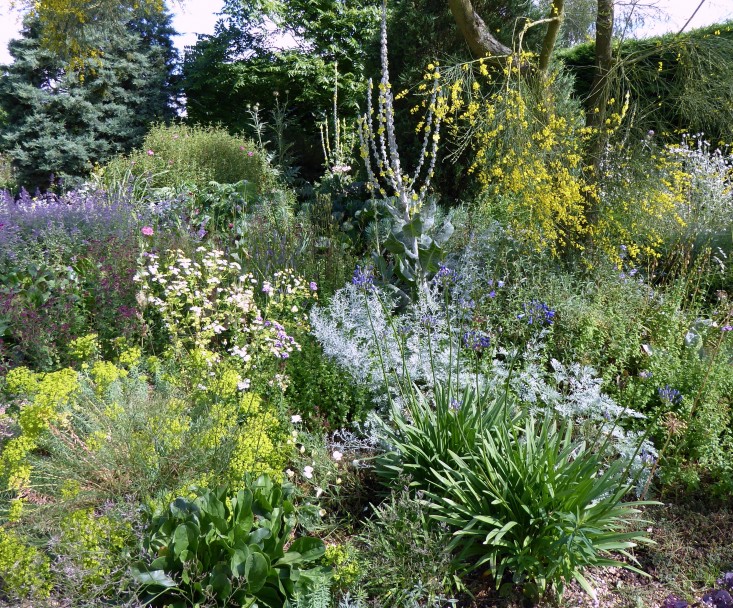
Above: Beth has an incredible eye, which is evident in every corner of her gardens. One of the principles is to plant in triangles using verticals, which are then anchored with lower plants. Often there are triangles within larger triangles.
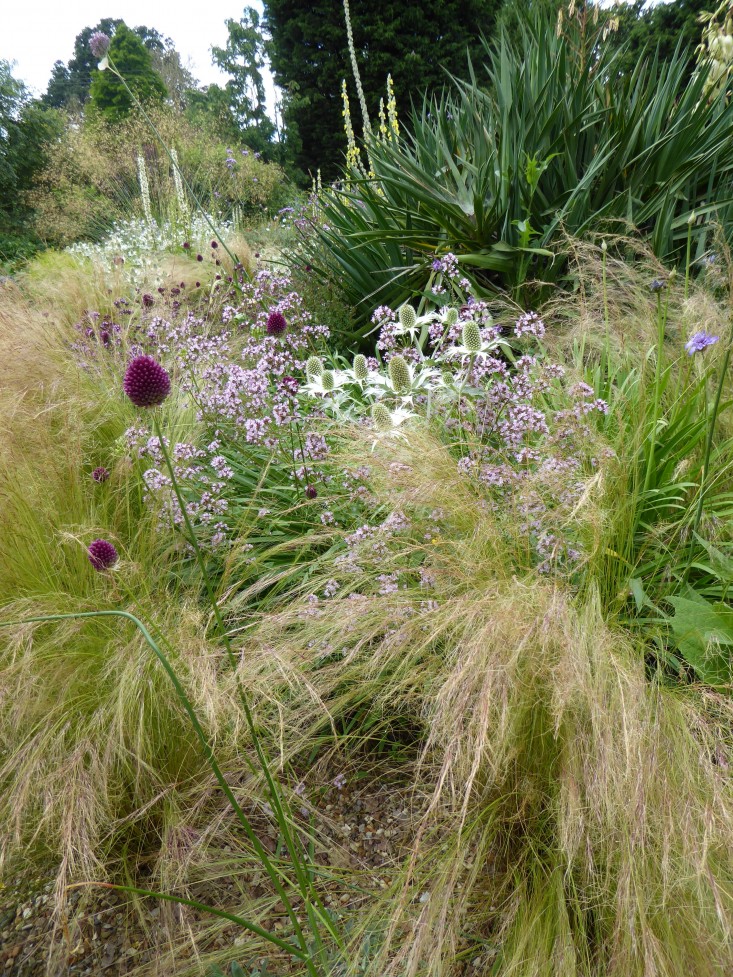
Above: Texture is another key component, contrasting spiky shapes with softer textures or pretty colors. Here Stipa tenuissima contrasts brilliantly with Eryngium ‘Miss Wilmott’s Ghost’, Allium spaerocephalon, and marjoram.
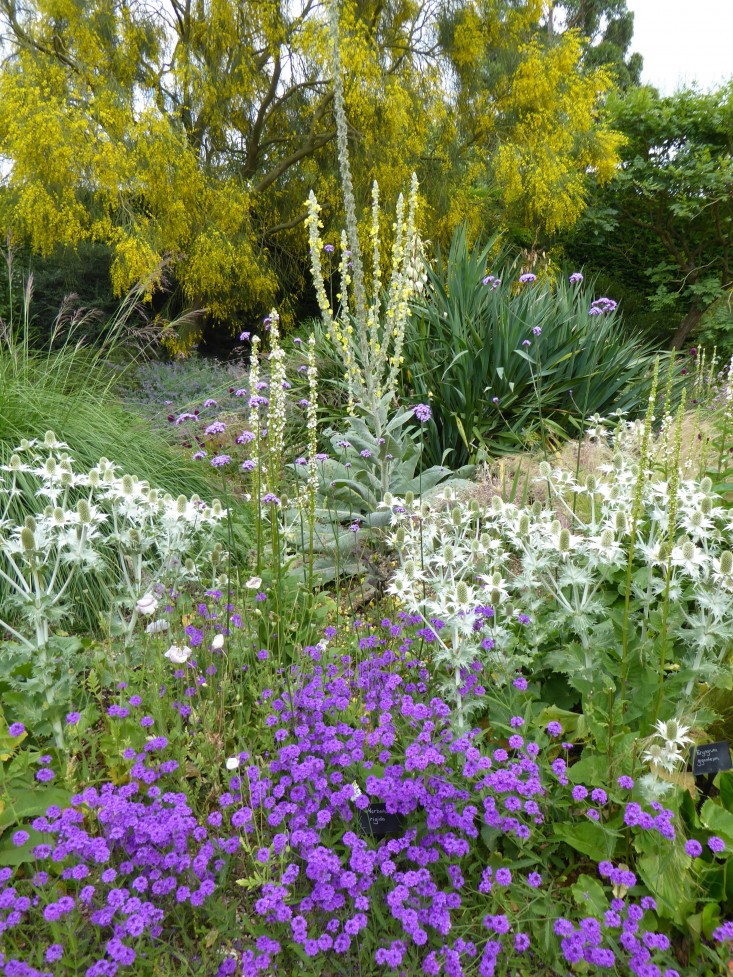
Above: Accents of purples and yellows bring a cohesion, often dotted through in a considered way, drawing the eye through the space. Here the wonderful yellow of a broom tree (Genista aetnensis) works brilliantly with verbascums and the intense magenta of Verbena rigida. Other key yellows include Bupleurum falcatum, a shorter alternative to fennel, and vivid acid Euphorbia segueriana. The broom is also typical of trees here, which create only a lightly dappled shade.
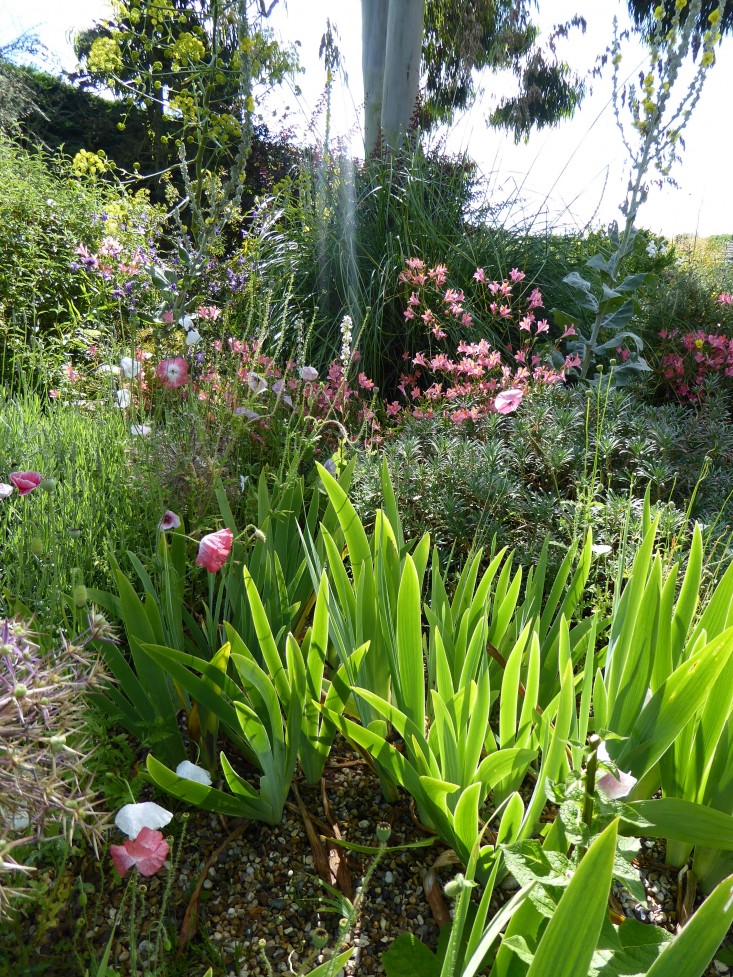
Above: There is a surprising number of soft pastel shades too, with alstromeria and annual poppies in pale pink to self-seed throughout the garden. Here, a patch of bearded iris brings height to the front of the border in early summer and foliage later in the season.
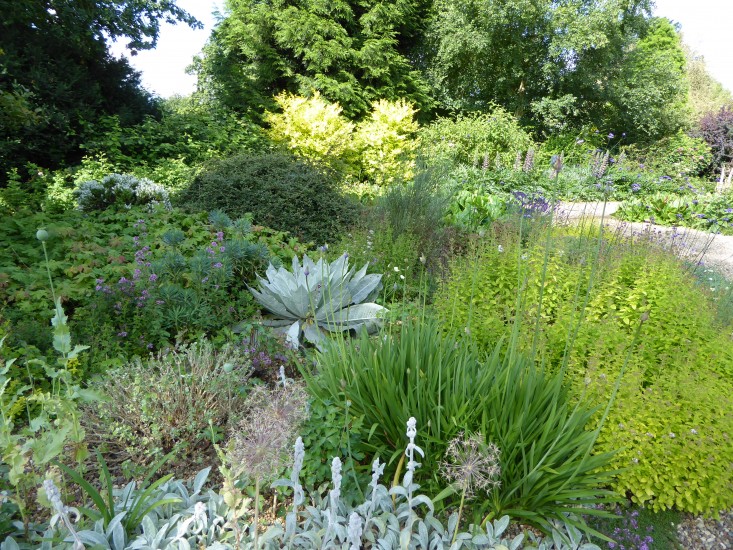
Above: Almost everything in the gravel garden is hardy – the exception is the agaves which are planted out in early June once the threat of frosts has passed, creating silver focal points.
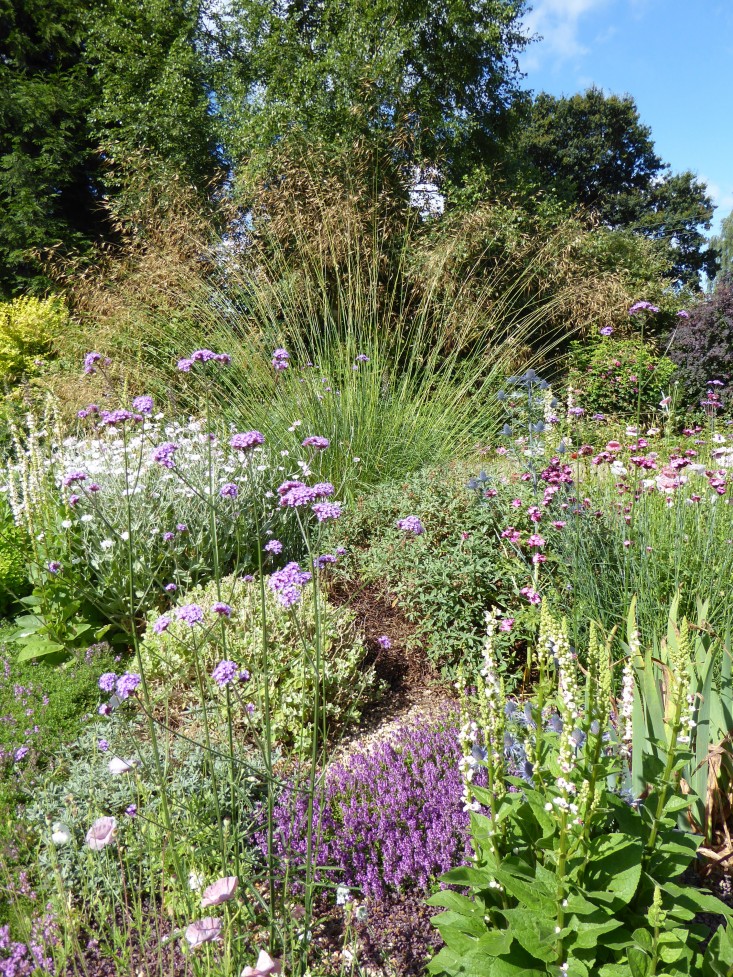
Above: Foliage is critical in all shades of green from the soft silvers of Stachys byzantina, Melianthus major, sea kale, and santolinas to the many varieties of thyme and marjoram that creep around the front of the borders or create lush mounds that have the added benefit of wonderful scent too.
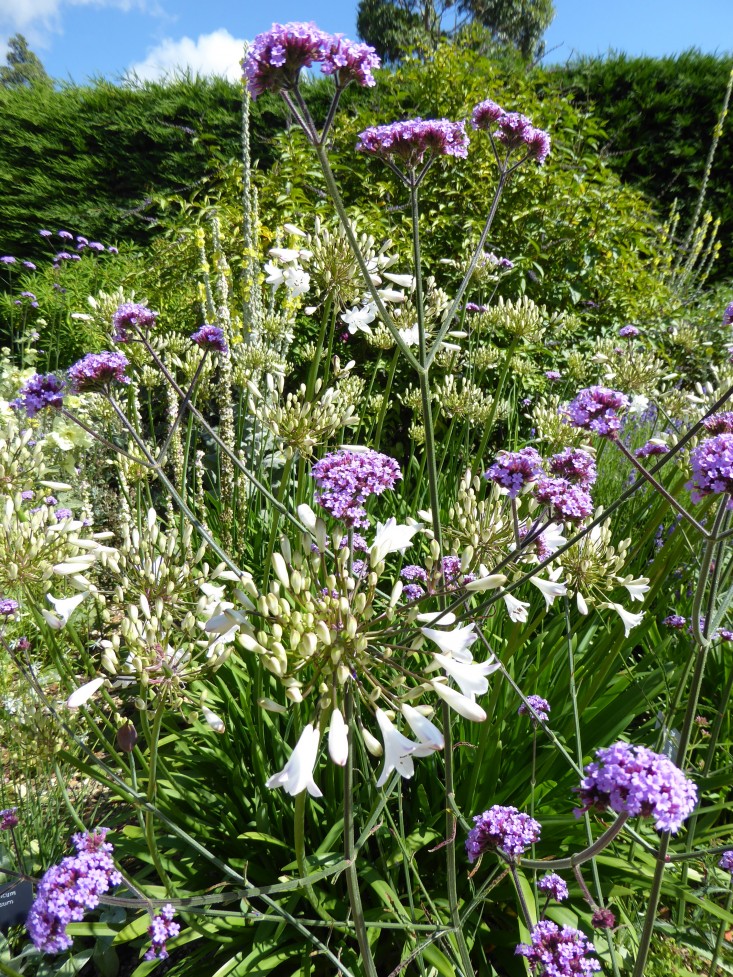
Above: The off-spring of rampant self-seeders are often removed before they dominate. The gardeners here will often selectively pull out self-seeded plants such as Verbena bonariensis, verbascums, and fennel.
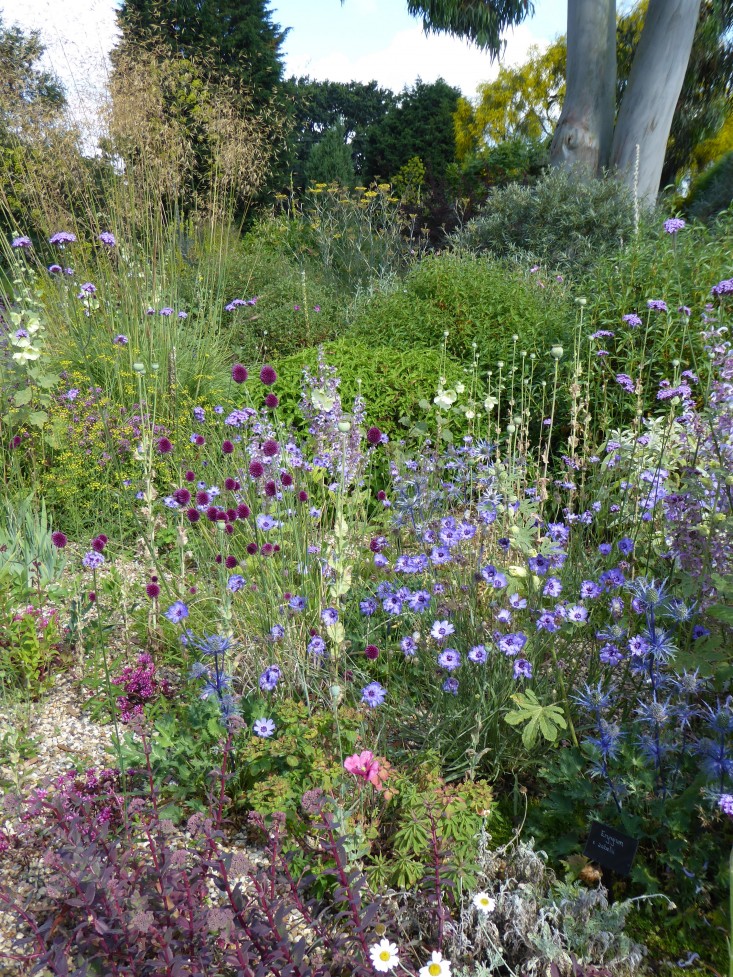 Above: Many perennials including phlox, gaura, and sedums are cut back in late May to extend the season and, in some cases, to stop them getting too tall. Other plants such as thyme will be given a trim as a refresh, and in the autumn many of the plants are left with their foliage to create some interest and to protect the crowns during winter.
Above: Many perennials including phlox, gaura, and sedums are cut back in late May to extend the season and, in some cases, to stop them getting too tall. Other plants such as thyme will be given a trim as a refresh, and in the autumn many of the plants are left with their foliage to create some interest and to protect the crowns during winter.
N.B.: The next gravel garden study day with David Ward will be September 21. It costs £56 and includes lunch. For more information, see Beth Chatto.
For more of Beth Chatto’s gardens, see England’s Most Influential Gardener? A Visit with Beth Chatto and Required Reading: Beth Chatto’s 5 Favorite Flowers for a Gravel Garden.
Copyright © www.100flowers.win Botanic Garden All Rights Reserved